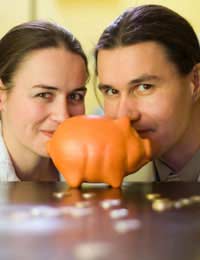I have not read the book, but from the excerpt in the Times, I know what is inside. Here is a passage:
Increasingly desperate that morning – “I feel like I’m playing Whack-a-Mole,” he complained to his peers – Mr. Fuld decided to call his old friend John Mack, the chief executive at Morgan Stanley, the second-largest investment bank after Goldman Sachs. After dialing Morgan’s New York office, Mr. Fuld was transferred to Paris, where Mr. Mack was visiting clients in the firm’s ornate headquarters, a former hotel on the Rue de Monceau.What we learn from the above is that:
After some mutual disparagement of the markets, the rumors and the pressure on Fannie Mae and Freddie Mac, Mr. Fuld asked candidly: “Can’t we try to do something together?” It was a bold question and Mr. Mack had suspected it was the reason for the call. While he didn’t believe that he’d be interested in such a prospect, he was willing to hear Mr. Fuld out.
“We’ll come over to your offices,” Mr. Fuld, clearly anxious, said.
“No, no, that makes no sense. What if someone sees you coming into the building?” Mr. Mack asked. “We’re not going to do that. Come to my house, we’ll all meet at my house.”
On Saturday morning, Mr. Fuld pulled up to Mr. Mack’s mansion in Rye, N.Y. Despite the beautiful weather, he was tense. He could already imagine the headlines if it leaked.
The Morgan Stanley team had arrived and was socializing in the dining room, where Mr. Mack’s wife, Christy, had put out plates of food she had ordered from the local deli.
- When Fuld called Mack, Mack was in Paris, in Morgan Stanley’s ornate headquarters, which was a former hotel on the Rue de Monceau.
- Mack and Fuld knew each other.
- Mack and Fuld did not like – or understand – what was happening in the markets.
- Mack had a sixth sense, certainly a strong intuition. When Fuld reached him in Morgan Stanley’s ornate office in Paris, he “suspected” that Fuld was calling him for something important.
- Fuld who had reached Mack in Paris to talk about his firm’s survival had not prepared a proposal or even an opening pitch. “Can’t we try to do something together?” is what he said, by way of proposing a merger involing about $2 trillion in assets.
- Fuld was a simpleton, suggesting to go to Mack’s office. A child would know not to do that. (Paulson met with the Goldman Sachs board in Russia – when he was the U.S. Treasury secretary.)
- Fuld was a quick learner. On Saturday morning, in front of Mack’s mansion, he was tense (although the weather was good) because he had learned that it was not good for him to be seen with Mack
- Mack’s wife, who goes by the name Christy, had ordered takeout food from a deli in Rye, New York which is where she and her husband, Mack, live in a mansion – Mack Mansion, presumably.
It serves no purpose to comment on this trashy, gossipy writing masquerading as financial investigative journalism, except to point to the way it is intended to drum up the sale. The tidbits that permeate the narrative send the subliminal message that the author is close to the center of power and hence, privy to knowledge and inside information. That association is the source of his authority; he knows the cause of the crisis because he knows the players whose actions influenced it. That it is precisely the opposite, that businessmen and traders could shed absolutely no light on the cause of the crisis, that the more nonsensical tidbits you hear or read about the less you would know, is something that neither Andrew Ross Sorkin nor those who bought his book will easily believe – or understand. The milieu in which these events take place stands against such understanding.
I caught a glimpse of Ross Sorkin on Charlie Rose. The host and guest agreed that the main lesson of the crisis is “ultimately” about the human failure. You know about this the-fault-is-not-in-the-stars thing, akin to saying that an airplane crash was “ultimately” due to the gravity. The author is a young man. He talks fast and confidently, the way confidence men do. He has no qualms or doubts about what he knows; how could he, having heard the behind-the-scenes drama from the movers and shakers, knowing what a lawyer was wearing to a weekend meeting and which highway Fuld's driver took on the way to New York?
Not to be too harsh on him, but he, too, while also a victim, is at the same time a part of the fraud that is continuously perpetuated on the citizenry.
If the young lions of financial journalism are bad, the old timers are scarcely better. On Friday, Ron Chernow, the author of a confused history of J.P. Morgan, wrote an Op-Ed Page piece in the New York Times in which he compared the current financial crisis with the crash of 1929. Here are three sample statements, followed by my comments:
For many participants, a whiff of sin only enhanced the stock market's seduction. Small investors imagined that the large speculators who dominated the exchange could, if necessary, levitate the market and prevent unpleasant crack ups.The modern markets, too, thrived on the whiff of scandal. All Madoff investors were told – and passed it to others – that the “New York people had a system.”
Margin loans equivalent to one-fifth the value of listed stock poised the market on a tall but shaky scaffolding.In the current criss, while the margin on stocks was one-half, the firms as a whole had margins in excess of thirty to one, six times higher than what was allowed for the individual stock investors in the late 1920’s.
Unlike the 2009 crash, the 1929 debacle didn’t topple major banks or corporations. It simply wiped out a generation of speculators.The crash of 1929 only toppled speculators and not banks because in 1929, banks were not involved in speculation. In 2007, they were.
Chernow has no central argument, he has no point. His writing is a hodgepodge of anecdotes and false parallels and analogies that ultimately leave the reader frustrated and exhausted.
What these men want to offer, but cannot, is a coherent narrative of a crisis that has devastated much of the world's economies in the past two years. I explained the crisis in some length in the Credit Woes series. Since Lehman’s case, for good reasons, is intricately linked with the crisis, let me once again use it to highlight the things we need to know. Only then we will be able to understand the crisis. This is not a “case study” approach, but an analysis of a part that contains some critical aspects of the whole.
Lehman had $1 capital, its own money. It then borrowed $32 and use all the money to buy securities worth $33. The securities were pledged as collateral for the loan, the way you would pledge your house for mortgage. Unlike your mortgage, though, Lehman’s borrowing was short term; it had to be refinanced, i.e., renegotiated, every day, or every week or every month.
In 2007, the securities prices dropped – crashed, really. (As an example of the severity of the crash, Merrill sold some of its securities for 22 cents on a dollar.) The securities that Lehman had purchased for $33 were now worth, say $20. The lenders did not accept holding $20 worth of collateral for loans totaling $32. As per terms of the loans, they demanded that Lehman pay the shortfall, the $12. Lehman had only $1. It could not pay $12.
Under these conditions, the die was cast. Short of a government bailout – the Fed or the Treasury giving Lehman the life-saving $12 – there was no way the firm could survive. Paulson and Geithner refused. The firm went under.
Three questions must now be answered, one specific to Lehman, the other two, general:
1. Why was Lehman allowed to fail?
To the extent possible, I answered this question here and here.
2. Why did Lehman follow a suicidal business model, borrowing 32 times its capital?
The answer is that it had no choice. Had it not pursued that specific business model, it would have been forced out of business or taken over many years prior to 2008. That was the case with all broker/dealers; Lehman was by no means an exception. So it is nonsensical to speak of management failure, as the decision to increase the leverage was conscious and deliberate.
Now, why is this so, i.e., why are financial institutions forced to behave in this way, is the subject of Vol. 4 and especially, Vol. 5, of Speculative Capital.
3. Why did prices drop?
The answer does not involve buyers going "on a strike" or the market being flooded with the securities or irrational exuberance. It has to do with the transformation of values to prices, something very objective. It is a fascinating subject that must be developed from the ground up and followed to its logical conclusion. That is the subject of Vols. 4 and 5 of Speculative Capital.
Stay tuned.





















